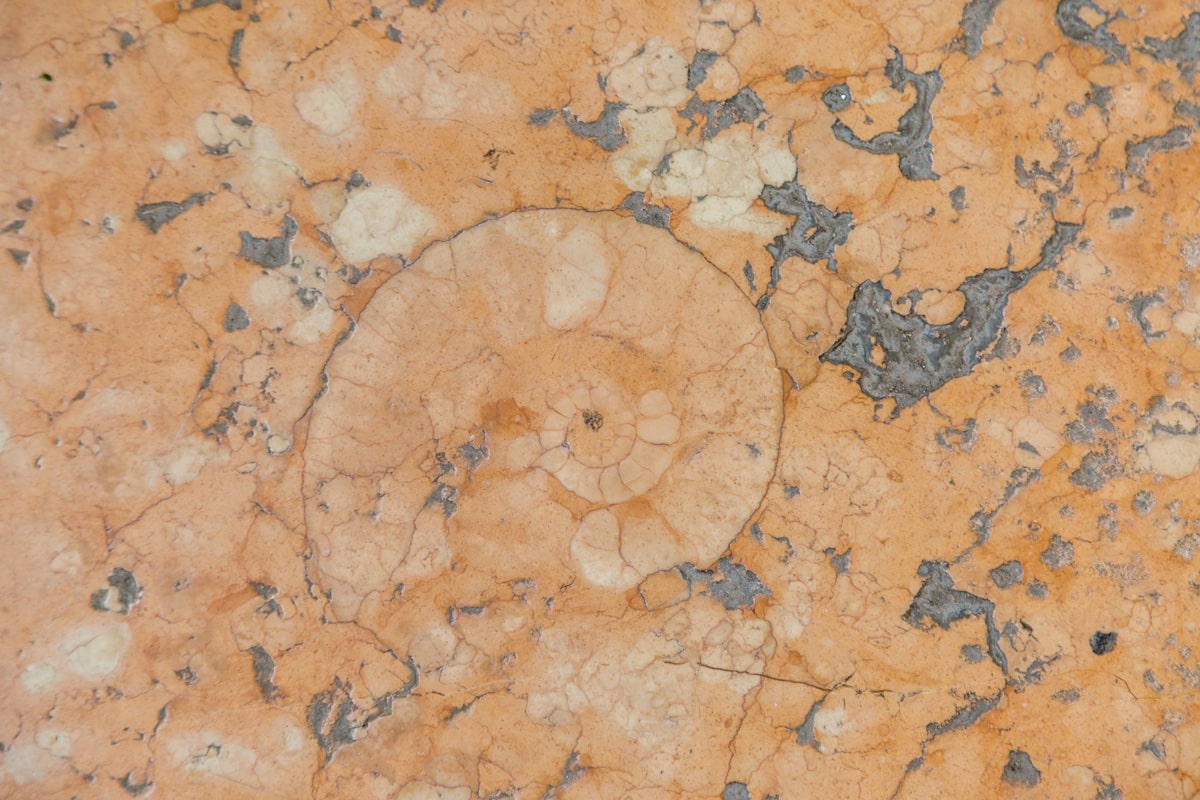 As we first walked into the apartment building that we would call home for the next two months, I looked down at the polished limestone and marble floor and in one of the tiles was a spiral-shaped artifact. It was clearly a fossil.
As we first walked into the apartment building that we would call home for the next two months, I looked down at the polished limestone and marble floor and in one of the tiles was a spiral-shaped artifact. It was clearly a fossil.
Of course we had no idea what kind of fossil it was, but it was distinctly reminiscent of a chambered nautilus. After a little research we discovered that these ancient sea creatures are known as ammonoids.
 Later on, as we walked on the limestone pavement of Verona’s sidewalks, we noticed more of the same spiral-shaped relics embedded in the stone, and then we began to see them all over the city.
Later on, as we walked on the limestone pavement of Verona’s sidewalks, we noticed more of the same spiral-shaped relics embedded in the stone, and then we began to see them all over the city.
The beautiful red and white Verona limestone used in the sidewalk pavement as well as in many buildings throughout Verona (including the ancient Roman Arena), formed beneath the sea during the Jurassic period, 201.3 million to 145 million years ago.
 These rock formations were created as vast numbers of the spiral-shelled ammonoids died, and sank to the seafloor. Over time they were slowly buried and turned into stone. These weren’t tiny insignificant creatures either; most of the fossils that we’ve seen have been 20 cm to 30 cm (8 to 12 inches) across, and some up to 76 cm (30 inches) across.
These rock formations were created as vast numbers of the spiral-shelled ammonoids died, and sank to the seafloor. Over time they were slowly buried and turned into stone. These weren’t tiny insignificant creatures either; most of the fossils that we’ve seen have been 20 cm to 30 cm (8 to 12 inches) across, and some up to 76 cm (30 inches) across.
Actually, these extinct cephalopods (of the phylum Mollusca) are more closely related to living coleoids (i.e., octopuses, squid, and cuttlefish) than they are to shelled-nautiloids such as the living Nautilus species that the amminoids more closely resemble. But for me, that is a minor detail.
So now that the mystery is solved, do I keep looking down scanning for even better examples of the prehistoric spiraled shells, or revert my gaze to a less ancient period, merely five or so centuries old.
Maybe.

Stacy
24 Dec 2021Fantastic, I love the Verona fossils too. Great photos! Where was the apartment you rented?
Matt
19 Nov 2018So funny, I’ve been seeing these everywhere in Verona and thought I was going mad, glad this was the first page that came up when I tried to Google the spiral things!!
Neona
3 May 2018Very interesting. We didn’t see any fossils when in Italy but we weren’t in Verona. Have a great time.
Alice Mathias
2 May 2018Awesome!
Linda Shydo
2 May 2018Thanks for the history and science lesson. How cool that you noticed the fossil in the floor tile. But then again you have a photographer’s eye. Love your blogs.
missy ortega
2 May 2018Wow! Very interesting that these fossils are in the tile of your apartment and Verona’s walkways. I think it’s really cool that you examined the tiles closer. One of the fossils looks like a shrimp I savored yesterday at my favorite Italian grill. I enjoyed learning as I read this.
Chris
2 May 2018Well then, I will be on the lookout for cannoli fossils for you.
missy ortega
3 May 2018That’s funny. And a nice cup of expresso.
Butch
2 May 2018They tell a story… and you notice and listen and pass it on to us. Love the stories of science and history. Keep em coming.
Jeannie
2 May 2018What would we do without the internet? How would we learn or share? Chris is always in learning mode!